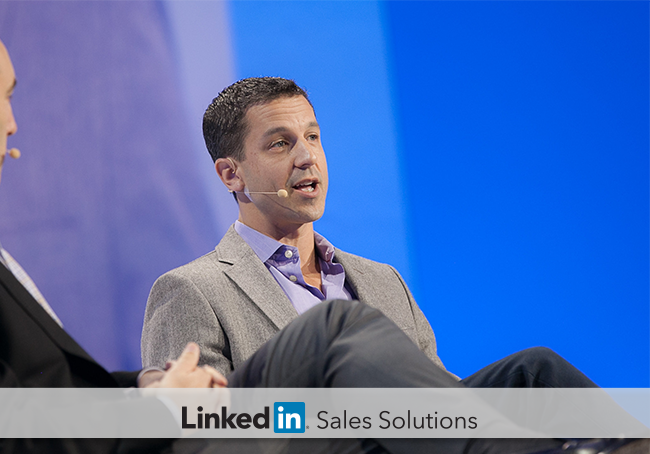How LinkedIn Inspires Its Team to Succeed with Social Selling

Guided by one of LinkedIn’s core principals, “Members First,” the team attacked the problem by focusing on a pain point for customers and salespeople alike: cold calling. They knew that cold calls are difficult to make, usually unpleasant to receive, and a bad investment for the companies that pay people to make them. In their quest to replace the cold call with something better for everyone involved, the team laid the groundwork for what became LinkedIn Sales Solutions.
Read on to discover how LinkedIn’s core values enabled Gamson and his team to succeed, how our corporate culture continues to inform our leadership style, and how LinkedIn Sales Solutions manages its team today.
Intelligent Risk: A Core Value
When they first floated the idea of bringing LinkedIn into the sales space, the big question was, “Do we even need a sales team?” Given the sales landscape at the time and the size of LinkedIn’s potential competition, the project was risky. But the team got the go-ahead from the executive suite based on LinkedIn’s core value of Intelligent Risk.
As Gamson explains it, there are three components to consider when taking a risk:
- Evaluation of the upside/downside ratio. How much does the company stand to gain, versus how much do they stand to lose if the risk fails? For LinkedIn, a worthwhile risk has a ratio of 3/1.
- Likelihood of a good outcome versus the value of the outcome. For example, a $1 lottery ticket could win $300 million. That’s a valuable outcome—but the likelihood is so low it doesn’t make sense for an intelligent risk.
- How the risk fits with the rest of the operation. It’s important not to think of each risk in a vacuum. Ask, do we have the time and resources to successfully pursue the risk?
The unofficial fourth part of LinkedIn’s risk-taking policy is acknowledging that failing is part of the process. As Gamson puts it, “It’s easy to say “we like risk taking” when you win. But it’s in the moments of something going wrong that our culture is tested. In failure, we can celebrate a risk worth taking.”
Because LinkedIn’s management stuck to their core values, LinkedIn Sales Solutions became a reality, kicking off the social selling revolution.
Corporate Culture: From the Middle Up
LinkedIn’s management realized the importance of corporate culture early on. But the culture wasn’t codified until employees pushed to write it down and have the whole company commit to a shared culture.
The employees in the middle drafted LinkedIn’s culture code, and executives approved it with only one minor change: “Be assertive” changed to “Be constructive.” “No one at LinkedIn had any trouble being assertive,” Gamson says.
LinkedIn quickly found the culture code gave them a competitive advantage for finding great talent. LinkedIn’s management has a three-point policy for making sure the company’s day-to-day activity matches the written code:
- Set the standard
- Demonstrate the standard, leading by example
- Hold others accountable to the standard
These principles guide LinkedIn Sales Solutions’ managers as they support the team.
Sales Team Management: Corporate Culture in Action
The LinkedIn Sales Solutions leaders hold each other accountable for how well they exemplify the culture. A big part of the corporate culture for sales is that managers should help their teams as much as possible. So in addition to leaderboards for the team, there is a leaderboard for management, scored on how many times each manager has helped a team member.
“One of the biggest barriers you face is that most team members are uncertain about your openness to helping,” Gamson says. “So tell your team how and when they can engage you. My team knows my network is there for their use, so long as the relationship is strong and the context is good.”
LinkedIn’s social selling movement began with a pain point and an idea for how to alleviate it. The company’s core values made conceiving and executing on the idea possible, supporting the intelligent risk of creating a sales team. LinkedIn’s corporate culture informed the creation of the team and helped attract top talent, and continues to guide team management today.
To see Mike Gamson’s full interview from LinkedIn Sales Connect 2015, watch the video below:
If you have a vision for social selling in your organization, now is the time to take risks to make it a reality. Download How to Cross the Chasm and Capitalize on the Social Selling Trend to get started.
Related articles



